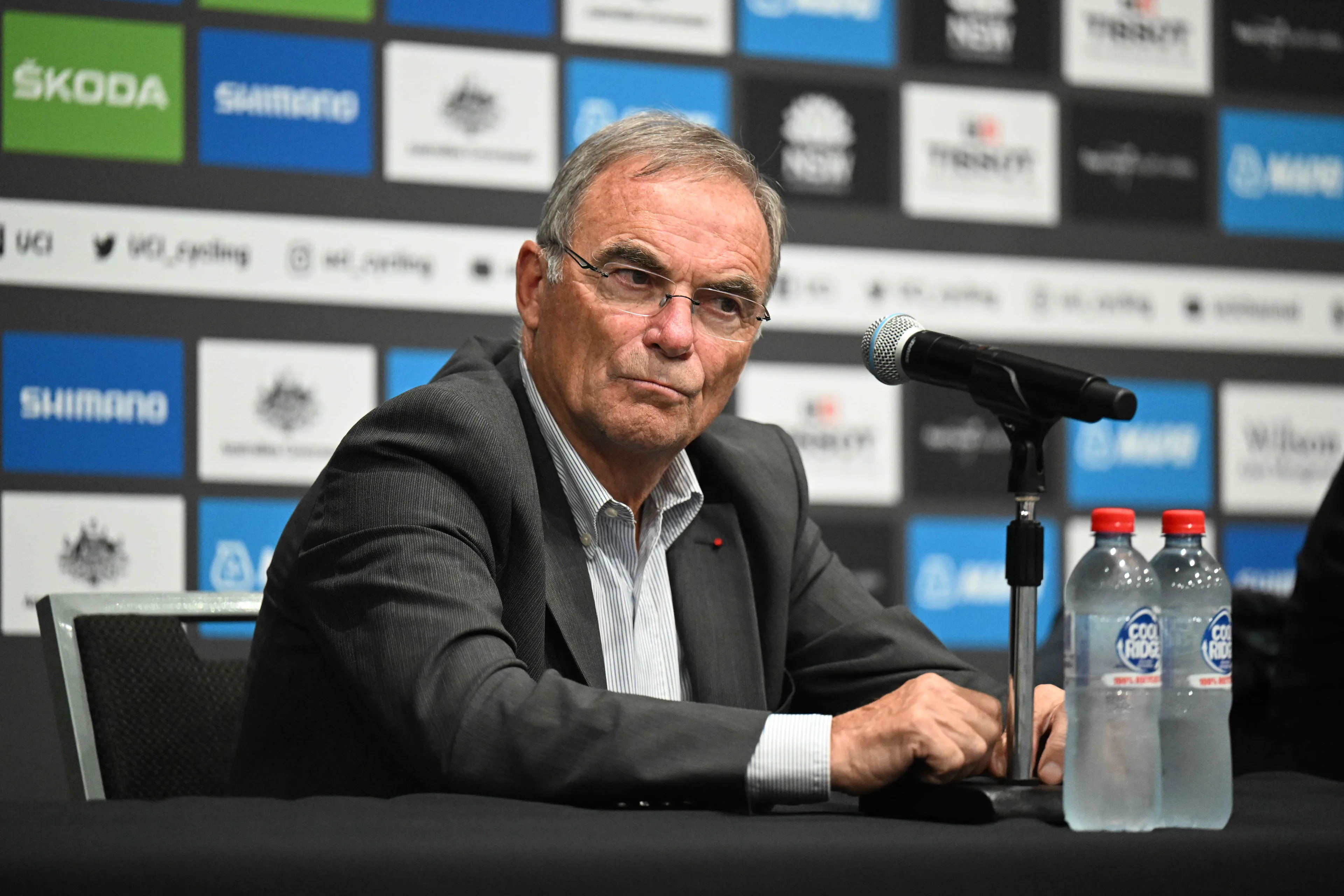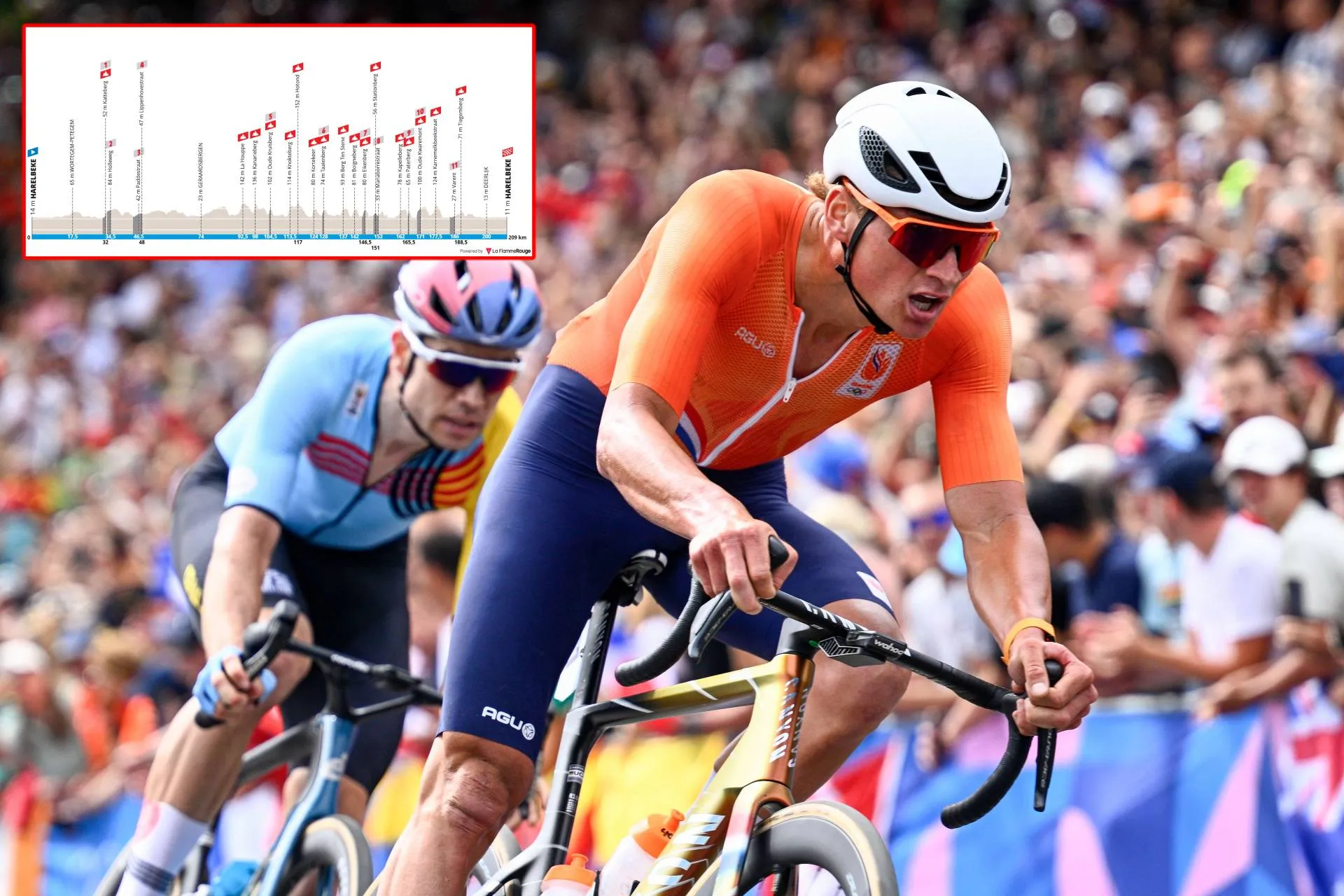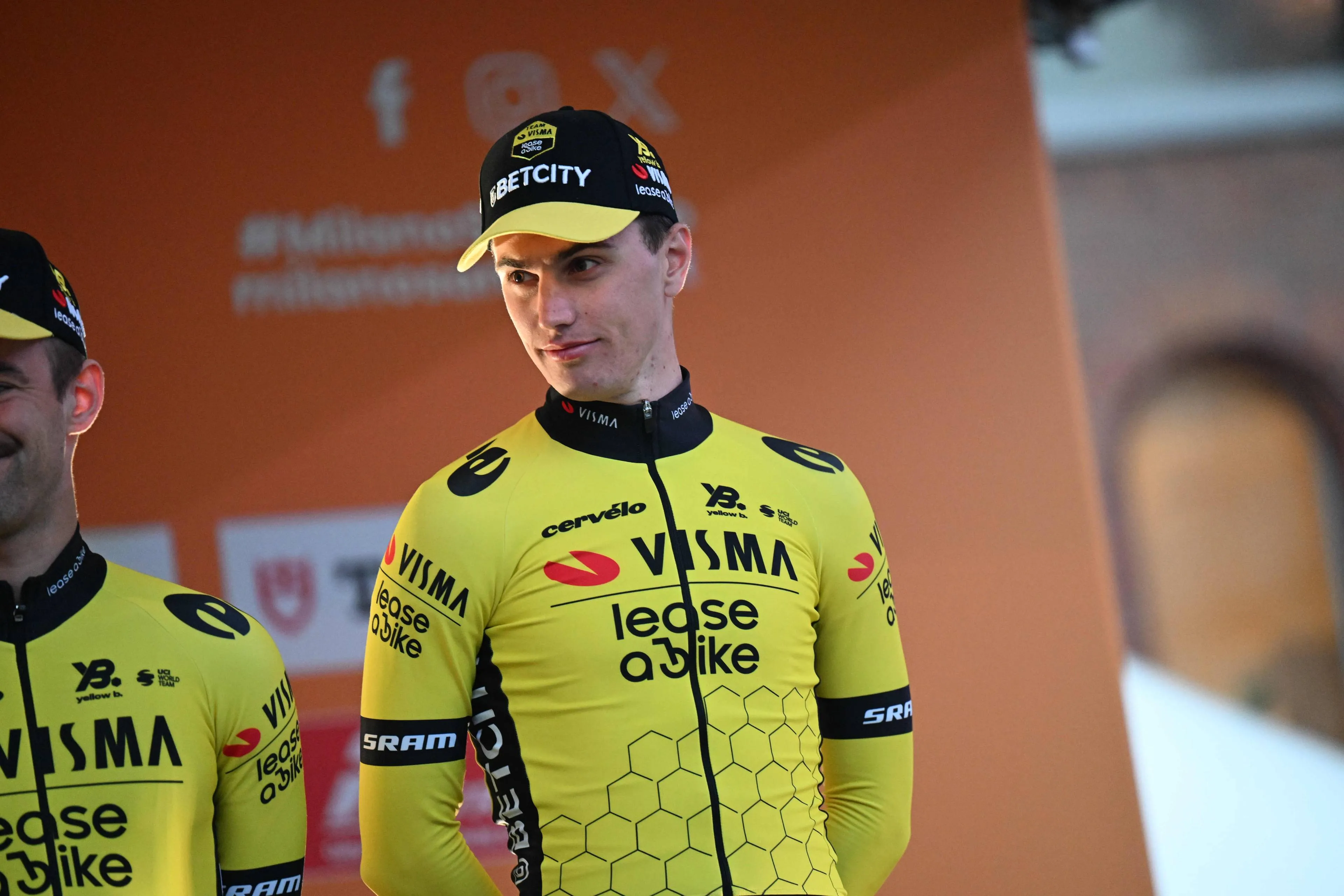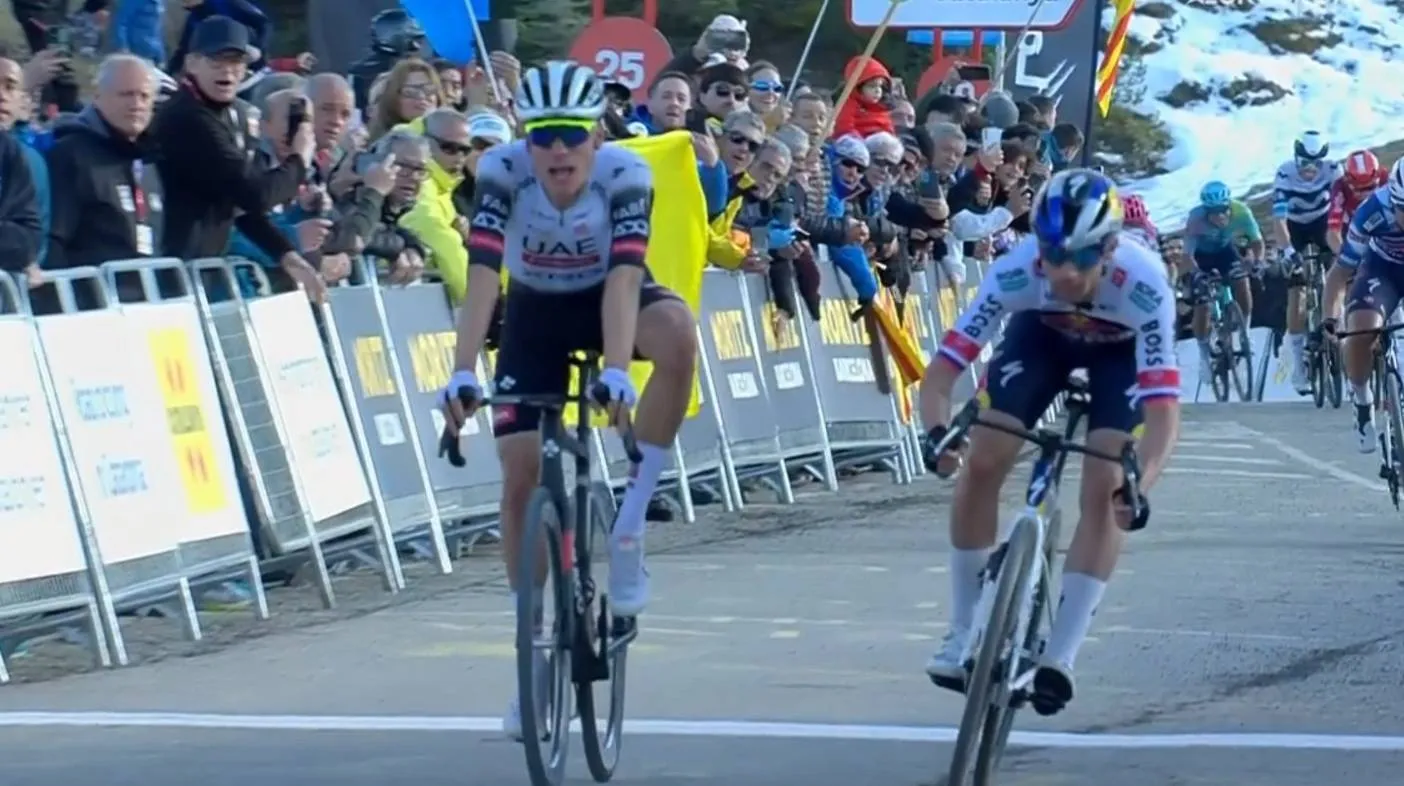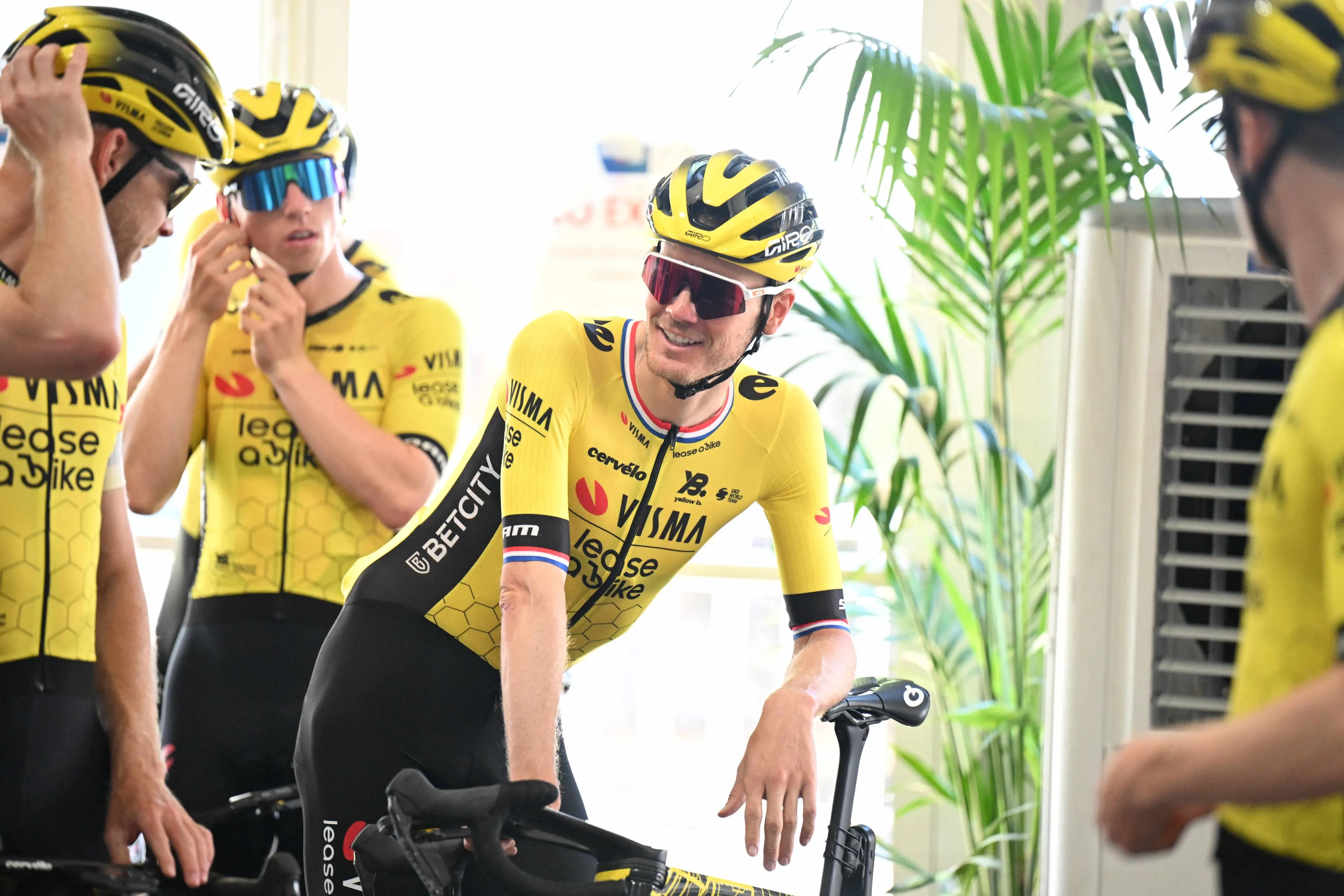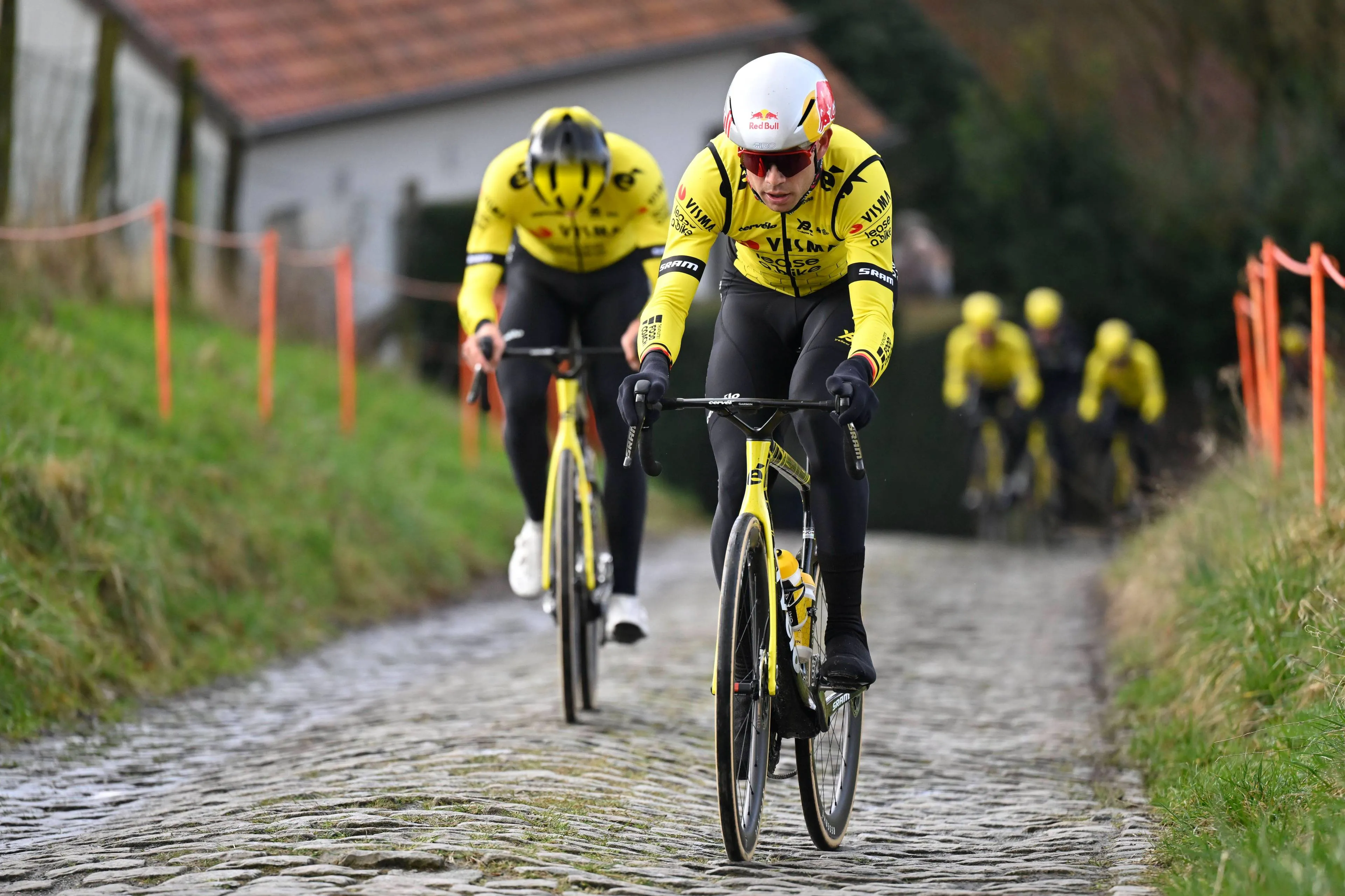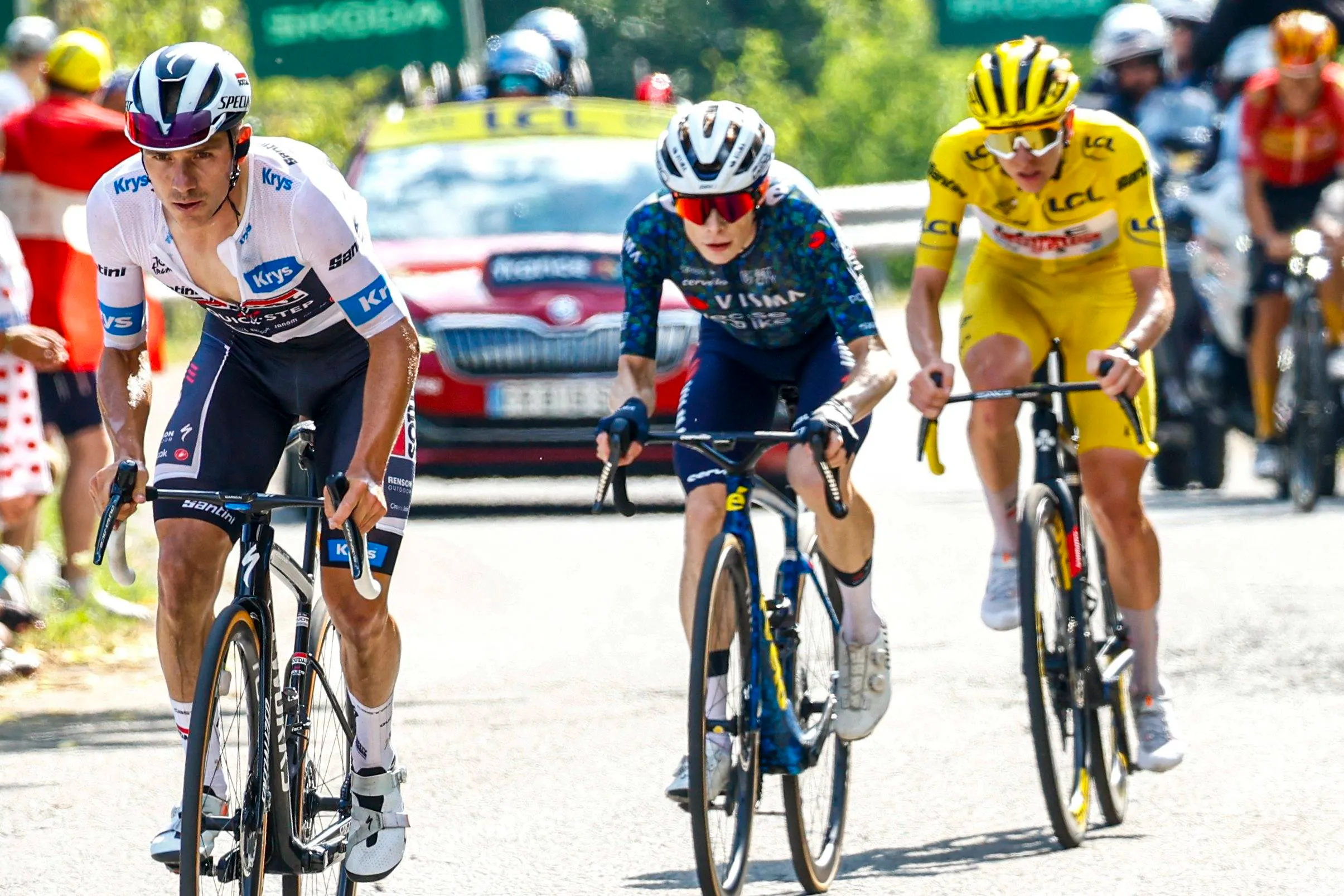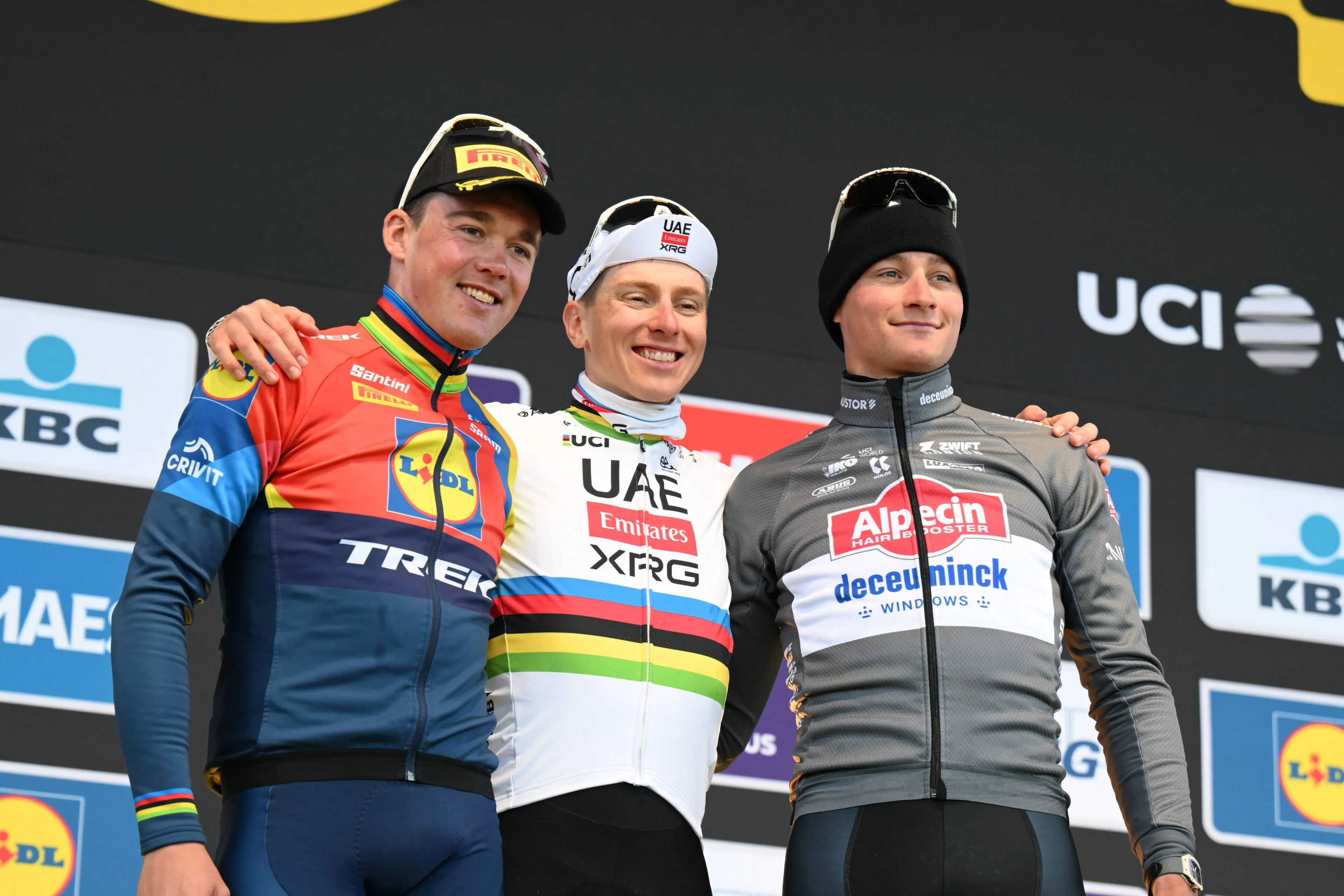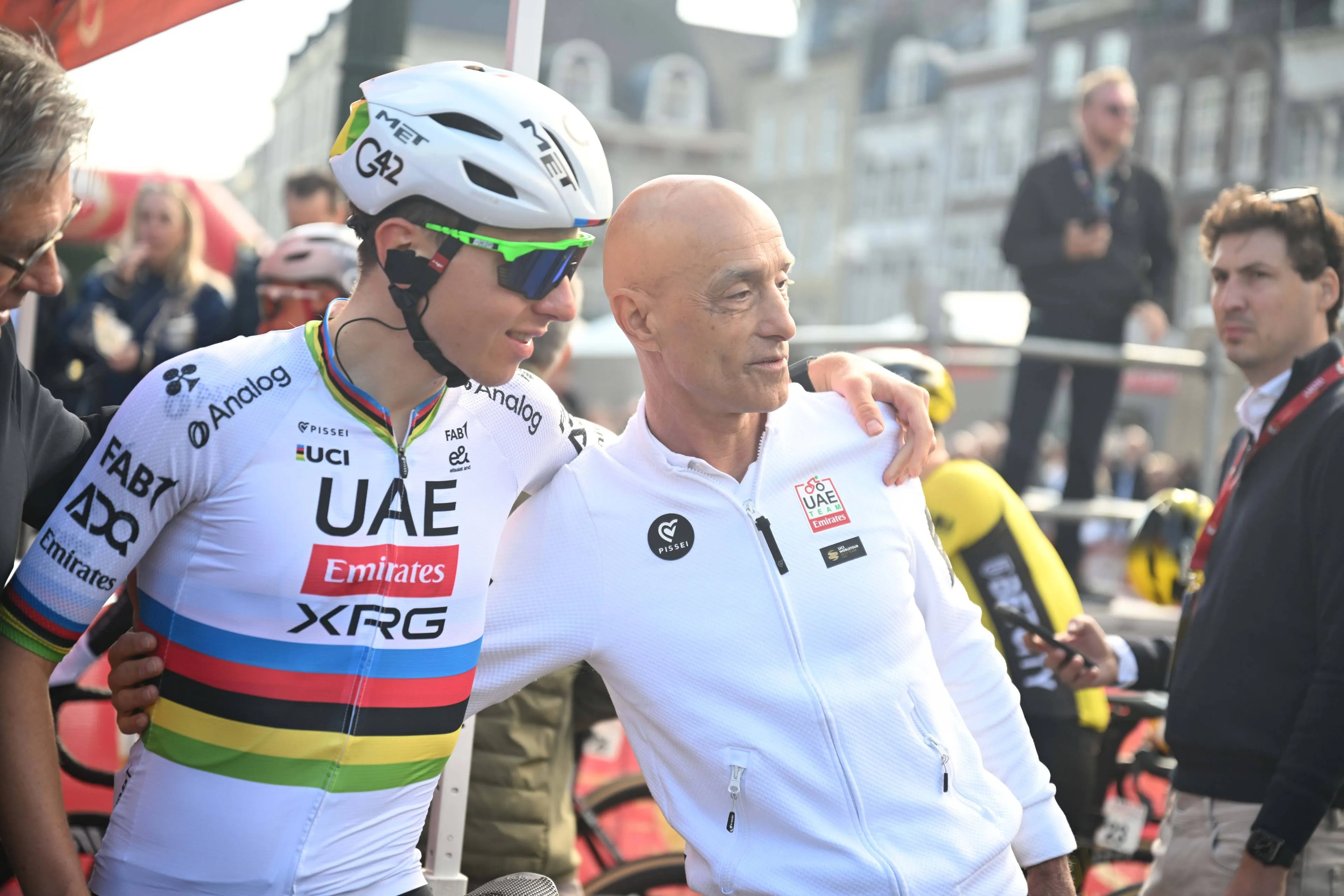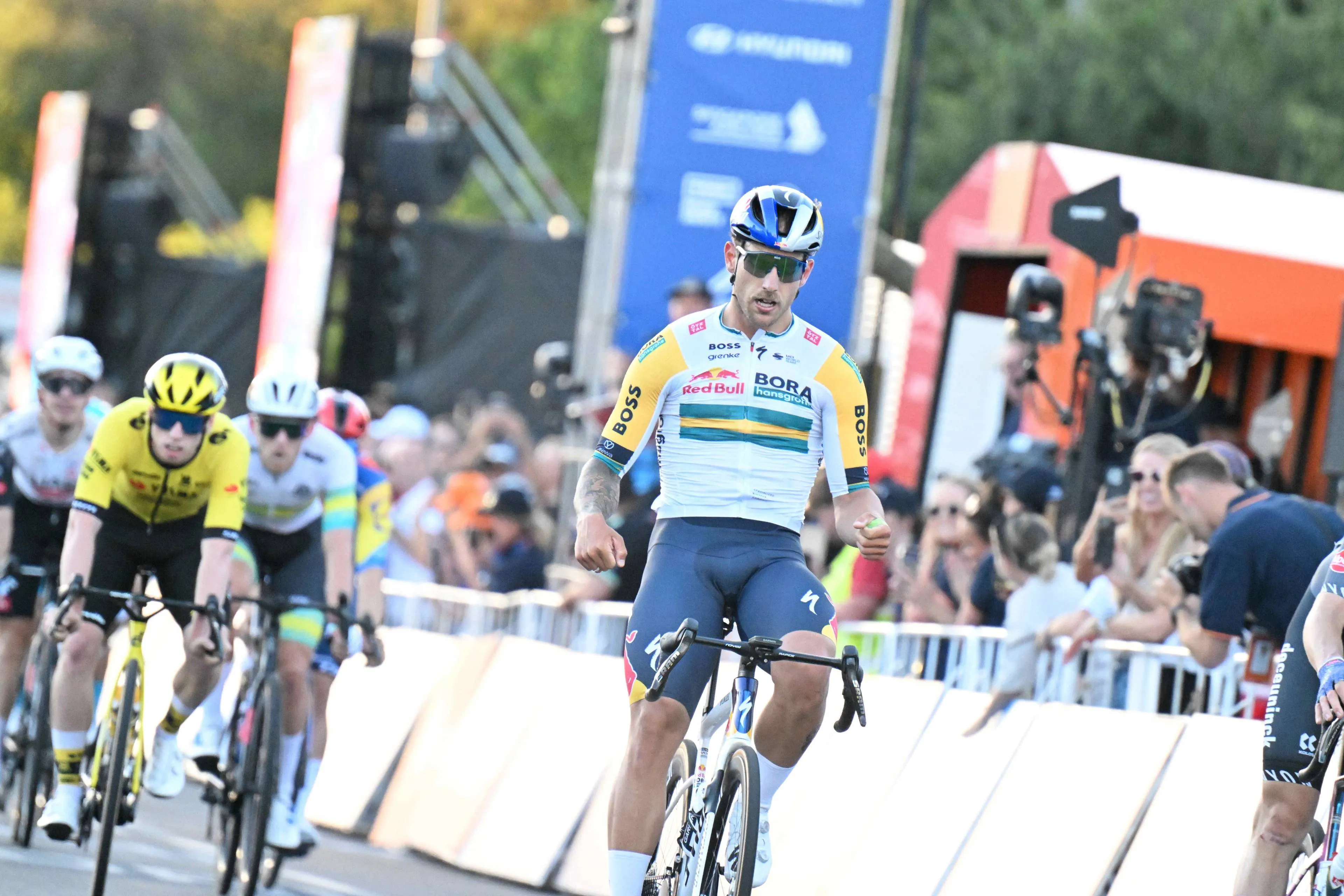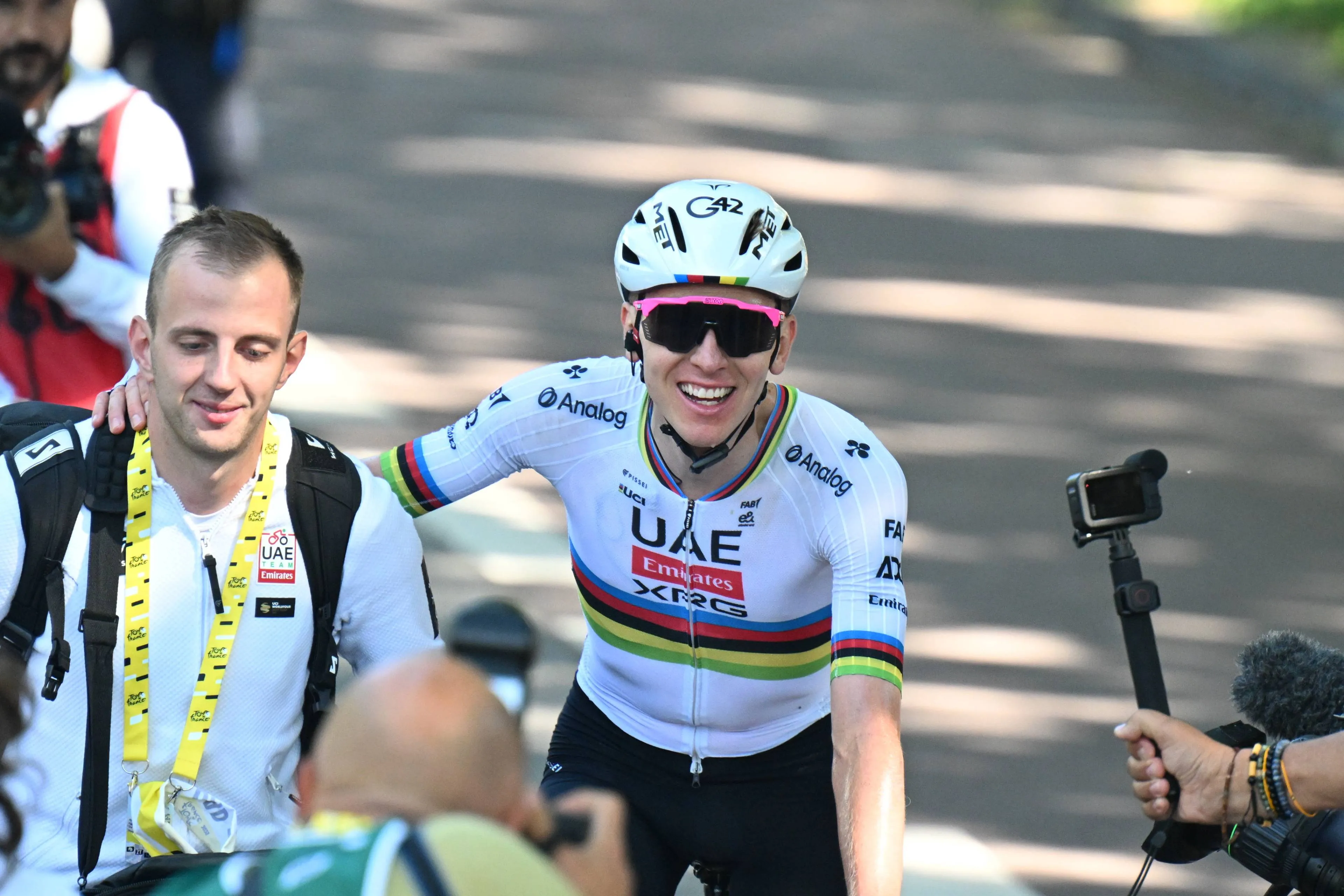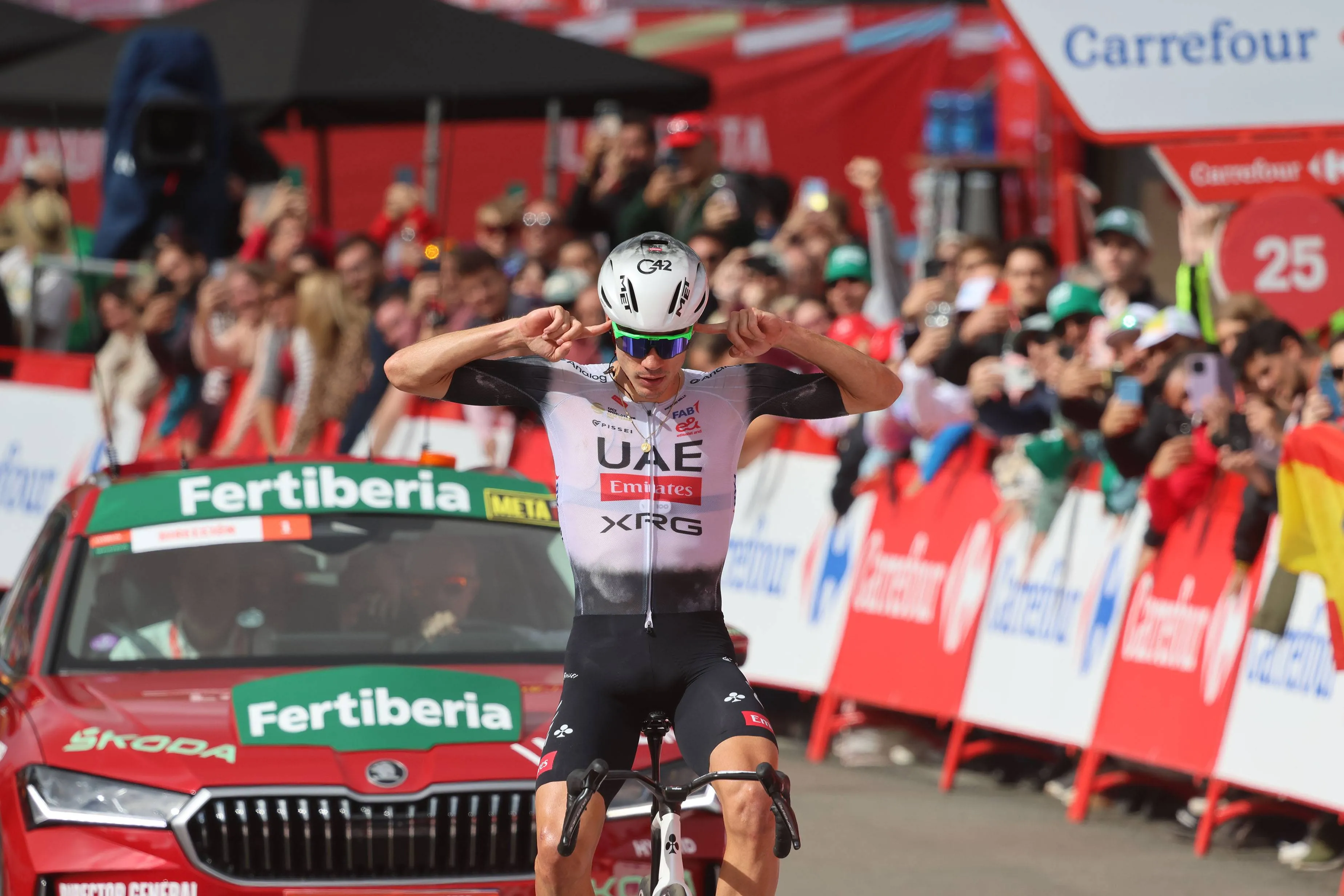ANALYSIS | Exploring the history of the E3 Saxo Bank Classic: How did the ‘little Tour of Flanders’ become a classic in its own right?
CyclingThursday, 27 March 2025 at 14:00

In the heart of Flemish cycling country, where cobbles
rattle bones and short, sharp climbs decide legacies, the E3 Saxo Bank Classic
stands as both a cultural celebration and a key proving ground for the sport’s
greatest one-day specialists.
Though younger than many of cycling’s Spring Monuments, the
race (held annually in the town of Harelbeke) has evolved from humble
beginnings in 1958 into a modern WorldTour staple, often dubbed the “little
Tour of Flanders.”
Yet despite changes in names, sponsors, and even race dates,
E3 Harelbeke, as locals still fondly call it, has remained deeply rooted in
regional pride, tradition, and tactical brilliance.
Read also
From E3 highway to cycling classic
The race’s unusual name has nothing to do with a title
sponsor or race format. Originally known as Harelbeke–Antwerp–Harelbeke, the
first edition in 1958 followed a simple out-and-back route.
Its identity took shape in the 1960s when organisers renamed
it E3-Prijs Harelbeke, referencing the European Route E3, a major highway that
once stretched from Lisbon to Stockholm and passed near Harelbeke. Although
that road is now designated the E17 in Belgium, the "E3" name stuck, and
has since become synonymous with cobbled brilliance.
Early winners quickly validated the race’s competitive
stature. Rik Van Looy, one of Belgium’s all-time greats, won four editions in
the 1960s, helping establish the race’s reputation as a launchpad for classics
greatness. Future Tour of Flanders and Paris-Roubaix winners like Jan Raas,
Johan Museeuw, and Andrei Tchmil all claimed victories here early in their
careers. Even Mario Cipollini, a sprinter best known for bunch finishes,
triumphed in 1993, an outlier result that highlighted the race’s tactical unpredictability.
Read also
E3’s changing names
Through sponsorship cycles and branding shifts, from
E3-Prijs Vlaanderen to E3 BinckBank Classic and now E3 Saxo Bank Classic,
the race has retained its Harelbeke core. The Grote Markt, Harelbeke’s central
square, has remained both start and finish for over six decades. And despite
joining the UCI WorldTour in 2012, the race has kept a distinctly local feel.
It is still organised not by the larger Flanders Classics group but by Hand in
Hand vzw, a local committee, further enhancing its homegrown charm.
One change that proved consequential came in 2012, when the
race shifted from its traditional Saturday slot to Friday, giving riders a
vital recovery day before Gent–Wevelgem and reshaping the Spring Classics
calendar.
Read also
To locals, E3 is more than a race, it’s an annual
celebration. Held each March, it marks the start of Flemish Cycling Week,
igniting the region’s passion ahead of the Ronde van Vlaanderen. On race day,
Harelbeke’s schools and shops often shut early as residents line the streets.
Families picnic roadside, beer tents pop up along cobbled climbs, and Flemish
flags flutter from village windows.
Fans enjoy remarkably close access to the stars. Riders and
teams gather in the town square without heavy barricading, offering fans the
rare chance to chat with favourites or grab a selfie. One writer called it
“charmingly mom-and-pop,” a sharp contrast to the polished spectacle of other
WorldTour events.
Read also
This mix of world-class racing and intimate atmosphere makes
E3 beloved across generations—and a source of local pride. The race has even
responded cheekily to changes in other races: in 2012, when the Tour of
Flanders controversially dropped the iconic Muur van Geraardsbergen, E3 added
it in response, preserving the region’s traditions.
Legendary racers
The winner’s list is a who’s-who of classics royalty. After
Van Looy’s early dominance, the 1970s and ’80s saw victories by Jan Raas (three
in a row), Jan Bogaert and Willima Tackaert.
The 1990s introduced a new generation. Johan Museeuw won in
1992 before conquering Flanders and Roubaix in future years. Tchmil’s 1994 win
hinted at future Monument glory. Cipollini’s 1993 sprint win remains a
curiosity, a rare triumph for a pure sprinter in a race now defined by its
punishing bergs.
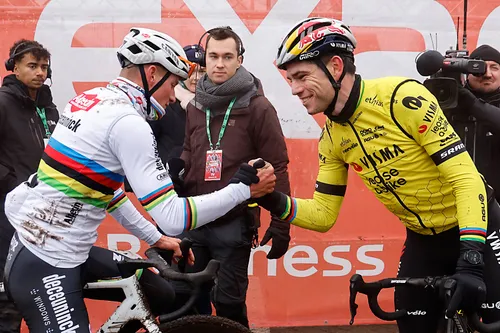
Van der Poel and Van Aert will be in action this Friday
But it was the 2000s that turned E3 into a spring
battlefield. Tom Boonen, Flanders’ rock star, made the Taaienberg climb his
personal launching pad, so much so that fans dubbed it the “Boonenberg.” He won
four consecutive editions from 2004 to 2007, and added a record fifth win in
2012 while wearing the rainbow jersey.
His great rival, Fabian Cancellara, added three wins of his
own, including a famous 35 km solo break in 2013 that showcased his unmatched
power. Their duels elevated the race and gave fans unforgettable moments.
Modern classics
Recent years have seen an expansion of contenders and even
more thrilling editions. Peter Sagan, Geraint Thomas, Greg Van Avermaet, Michał
Kwiatkowski, and Niki Terpstra have all tasted victory here, each bringing
different strengths: sprints, solo attacks, late breaks.
Read also
The 2021 edition was a tactical masterpiece by
Deceuninck–Quick-Step. They sent multiple riders up the road on the Taaienberg
and placed four in the lead group. When Kasper Asgreen attacked late, his
teammates covered every chase. The “Wolfpack” strategy worked to perfection.
In 2022, Wout van Aert and Christophe Laporte pulled off a
masterclass of their own for Jumbo-Visma. Attacking with 40 km to go, they rode
to Harelbeke as a two-man unit, crossing the line together with a 1:34 gap to
third place, a show of dominance rarely seen.
Then came 2023, arguably the race’s greatest edition. For
the first time, cycling’s big three (Van Aert, Van der Poel, and Pogacar) battled
head-to-head in E3. They broke clear with over 80 km to go and delivered an
epic duel. Van Aert narrowly won the sprint in Harelbeke, but all three crossed
the line nearly two minutes ahead of their nearest rivals.
Read also
What’s even more impressive from the 2023 edition is that
Van Aert was very nearly distanced by Pogacar and Van der Poel earlier in the
race. This edition didn't just thrill fans; it cemented E3’s status as the
ultimate dress rehearsal for De Ronde.
Last year, it was Mathieu van der Poel who came out on top
in the rainbow jersey as Wout van Aert suffered a crash. This was a sign of
things to come, as Van der Poel went on to demolish the field at the Tour of
Flanders and Paris-Roubaix, whilst Van Aert never made it to the monuments
after crashing hard the following week at Dwars Door Vlaanderen.
The Flanders prequel
Strategically, E3 serves as one of the final litmus test for
the Tour of Flanders. Held nine days prior, it mirrors the terrain, intensity,
and chaos of De Ronde, but in a slightly shorter format (200 km vs. Flanders’
270+). With 12–17 climbs, most within the final 90 km, and a flat run-in from
the final Tiegemberg, it offers teams and riders a near-perfect simulation.
Read also
The parallels are so strong that E3 winners often go on to
dominate in Flanders. Boonen, Cancellara, Van Avermaet, and Van der Poel have
all doubled up. For teams, a strong E3 can validate form, tactics, and
equipment choices, or expose flaws to fix before the Monument.
This alignment explains why the Flemish press call E3 “de
kleine Ronde van Vlaanderen,” the little Tour of Flanders. And for fans, it’s a
tantalising preview of what’s to come.
Race tactics
E3 demands a hybrid skillset: cobble-handling power, uphill
punch, and strategic finesse. The shorter distance compared to Flanders often
leads to earlier fireworks. Attacks on the Taaienberg are common, and often
decisive.
Read also
Winners come from varied scenarios: solo raids (Cancellara
2013), two-up battles (Kwiatkowski vs. Sagan 2016), or small group sprints
(Boonen, Stybar). Unlike Paris-Roubaix, where sheer durability often wins, or
Amstel Gold with its punchy finish, E3 sits between: explosive but tactical,
brutal yet open.
Modern racing has further evolved E3’s dynamics. Teams like
Soudal - Quick-Step and Visma treat it as a full-team effort, deploying
numerical superiority. GPS recon, tire pressure science, and real-time comms
are all critical, and so the race has evolved significantly.
And with wind and weather often adding chaos, it remains a
race where instinct and local knowledge matter as much as wattage.
Read also
From its roots as a quirky highway-inspired race to its
status as a modern WorldTour heavyweight, the E3 Saxo Bank Classic has carved a
unique space in the cycling calendar. It blends the familiarity of the cobbled
classics with a distinct character: part Flanders simulation, part local
celebration, and part tactical chess match.
It has produced legends, surprises, and some of the best
racing of the past two decades. Yet it still retains the grassroots, Flemish
soul that makes spring racing in Belgium so special.
Read also
More than just a “warm-up” or a “mini Ronde,” E3 is now a
classic in its own right, where history, community, and sporting excellence
meet every March on the road to Harelbeke.
So who will take the victory this Friday? Will Mathieu van
der Poel continue his incredible form from Milano-Sanremo, or will Wout van
Aert have an answer to the King of the Cobbles? Whatever the result, you can be
sure that the outcome will play a huge role in the season to come.
Bring on the action this Friday. It could be a thriller.
🇧🇪 #E3SaxoClassic
— Team Visma | Lease a Bike (@vismaleaseabike) March 27, 2025
All set for the cobbled climbs! 🪨💨 pic.twitter.com/b0sUR7AAte
claps 1visitors 1
Just in
Popular news
Latest comments
- Being Pogi's mechanic would be absolutely terrifying. he wins like 90% of the races he enters and if there is a loss due to mechanical issues especially in the GTs/Monuments , you are going to get the bootabstractengineer15-12-2025
- Some of these cyclists are really stupid. So a more important rider is hired, there are too many leaders, he talk betrayal, He talks adjustments, He is not selected for any GTs. and he still signs for them🤦🤦🤦abstractengineer15-12-2025
- "He’d sit in the kitchen drinking red wine with the chef for hours after dinner" strange but how is it related to dopingabstractengineer15-12-2025
- 🤣. he cannot surpass Merckx ever. Its not called ambition, its stupidityabstractengineer15-12-2025
- True - maybe there will be some chances for gee to ride for himself - he’s very good, but a GT winner? Seems a bit too far for him (or skelmose tbh) I’m glad Gee found a place - love how he rides and he seems a genuinely good fellowCrashjames15-12-2025
- I think it would be painful setback...MajorPayne15-12-2025
- Not even raced a Grand Tour yet and already got riders cheating. Just ensured they never get my support as can't even exist a couple years without cheating.HoopoeChai15-12-2025
- Now , we know who this guy is because he talked bad about Lazcano.
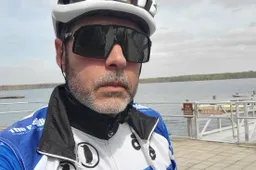 PAULO15-12-2025
PAULO15-12-2025 - unfortunately for Nys, he raced as well as he can. And MVDP had plenty of room to improve.mij15-12-2025
- God isn't real. Thankfully we have Tadej!!!Veganpotter15-12-2025
Loading
Write a comment

